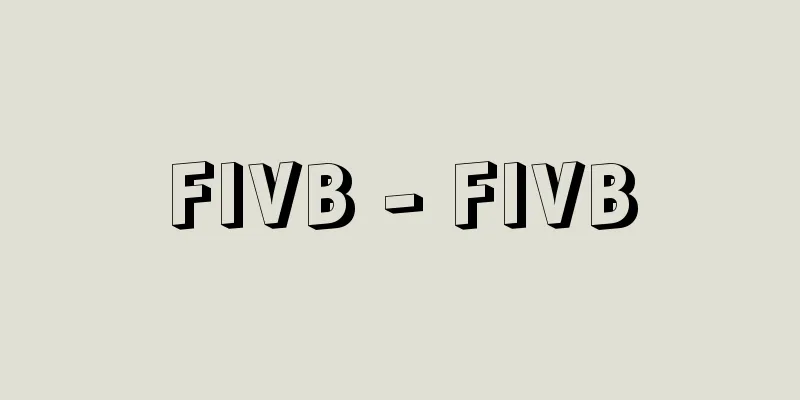Devil - Akuma

|
When we normally say "demons," we are usually referring to the Western devil, but the Japanese words "devil" and "ma" are originally Buddhist terms, and are said to come from the Sanskrit word Māra, which means an evil spirit that impedes asceticism and brings misfortune to good deeds. They disturb monks in meditation, make noise, and often disguise themselves as wild birds or animals to frighten people. This belief in demons and evil spirits is not an essential element of Buddhism, but it is thought to have been quite widespread in ancient India at the time of the rise of Buddhism, and they appear in early Buddhist scriptures. Generally speaking, when we say demons, it can refer to a variety of things, from evil spirits and demons to beings that oppose gods, but in most cases they are the descendants of existing gods before they were replaced by a specific deity. Demons, who use various means to plunge the world into chaos and destruction, are depicted in many primitive religions as beings that oppose God, who created the universe and maintains its order, but sometimes the conflict is carried over to the end of the world and concluded with a final battle between God and his angels and demons and evil spirits. The Western devil comes from the Greek word diabolos, which was later adopted into Christianity and became Satan. Satan, like Set in Egyptian religion, is considered the personification of the principle of evil, but was originally an archangel named Lucifer. He was also called a "fallen angel" because he was unable to withstand God's trials and was cast down to the mortal world. It is said that the establishment of this Christian view of the devil was greatly influenced by Iranian dualism of good and evil, and it is certainly true that the development in which Satan and Iblis are ultimately subordinate to God has been familiar to people in the Caucasus and Armenia for quite some time. There are essentially two ways to explain the origin of the world. One is that the world was created by a supreme god, such as Shiva, Vishnu, or Zerban, who has two opposing qualities - creator and destroyer. The other is that the world was created by two opposing forces, good and evil. The most representative of the latter is the teachings of Zoroastrianism in ancient Iran, in which the world is controlled by the deities Ahura Mazda and Ahriman, who represent the two principles of good and evil. It is said that this evil god Ahriman played the most important role in forming the Christian view of the devil. In the Old Testament, Yahweh is the source of both good and evil, and often harms humans, which is explained as "God's wrath" or "God's judgment." Satan is not depicted there as representing the principle of evil. Around the 6th century BC, Satan simply meant "enemy." However, in the Book of Job, Satan is revealed to be an evil god who tests Job, and by the first century BCE, he came to be identified with the serpent in Genesis and accused of bringing death to the world. According to Dante, the Devil has three heads, goat horns, a tail and cloven hooves, a form that may have been derived from pagan deities such as Pan and Satyrs. In Islam, the devil or evil spirit is called Jinn, which originally meant "magical power." Jinn are said to be created from fire, and while there are both good and evil Jinn, the bad ones are called Shaitan or Iblis. [Keiji Ueshima] Spiritual beings equivalent to the devil are believed in almost every part of the world, but the meaning is not necessarily the same. In Christian culture, the devil is an absolute evil that opposes God, but in primitive societies, the distinction between devils and gods (good gods) is often unclear, for example, the Greek word daímōn, the origin of the English word demon, means simply a spiritual being that can work for good or evil. God can bring disaster to humans if angry, and conversely, devils can bring blessings if appeased carefully. In Japan, if a curse god is worshiped, it can become a powerful good god. In fact, in many societies, gods have both good and evil sides. When a new religion is introduced into a place with an indigenous religion, such as Christian or Islamic areas in Europe, or when an invader brings a new religion, the old gods or the gods of the conquered people are often demonized. While God is the creator and protector of the social and moral order of the world, the devil is considered to be the destroyer of these, and antisocial people, such as sorcerers and evil sorcerers, are often associated with the devil, especially in Europe. Belief in the devil reflects the fear of the collapse of culture and social order, and anxiety about the devil leads people to comply with social norms. The devil emphasizes God and the world order, and in that sense, God and the devil are in complementary opposition to each other. In other words, the existence of the devil is necessary to support a dualistic worldview. [Itabashi Masami] Source: Shogakukan Encyclopedia Nipponica About Encyclopedia Nipponica Information | Legend |
|
われわれが普通、悪魔という場合、西洋のデビルdevilをさすことが多いが、日本語の「悪魔」および「魔」という語は本来仏教語で、修道の障害をなす悪霊(あくりょう)、善事に災いをもたらす悪神であるサンスクリット語マーラMāraに由来するとされる。それは瞑想(めいそう)中の僧を妨害し、騒音をたてたり、しばしば野生の鳥や獣に変装して、人々を脅かす。こうした悪魔・悪霊信仰は仏教の本質的要素とはいえないが、仏教の興隆時、古代インドではかなり広く普及していたと思われ、初期仏典にも登場している。 一般に、悪魔といった場合、そのような悪霊、魑魅魍魎(ちみもうりょう)の類から神と対抗する存在に至るまでさまざまであるが、いずれもある特定の神格によってとってかわられる前の既存の神々の末裔(まつえい)であることが多い。さまざまな手段を行使して世界を混乱に巻き込み破壊する悪魔は、多くの未開宗教において、宇宙を創造しその秩序を維持する神に対抗する存在として描かれるが、ときにはその争いはこの世界の終末にまで持ち越され、神およびそれに従う天使たちと悪魔および悪霊たちとの最後の決戦によって、結末を迎えることもある。 西洋のデビルはギリシア語のディアボロスdiabolosに由来するが、それはのちにキリスト教に取り入れられてサタンSatanとなる。サタンは、エジプトの宗教のセトSetと同様、悪の原理の人格化とみなされるが、当初においてはルシファーLuciferという名の大天使であった。彼は神の試練に堪えきれず下界に堕(お)とされたので「堕(だ)天使」ともよばれる。このキリスト教の悪魔観の成立にはイランの善悪二元論が大きな影響を与えたといわれるが、確かに、最後にサタンやイブリースIblīsが神のもとに従属するという展開は、コーカサスやアルメニアにおいてはかなり古くからなじみ深いものであったといえよう。 世界の起源を説明する場合、本来的には二つのやり方がある。一つは、二つの相反する性質――創造者であり破壊者である――をもつ最高神シバ、ビシュヌ、ゼルバンなどによる世界の創成であり、もう一つは、世界は善と悪という二つの相反する力によって創造されるというものである。後者の場合、もっとも代表的なのが古代イランのゾロアスター教の教えであり、そこではアフラ・マズダーとアフリマンという善悪二つの原理を表す神格によって世界は統御されている。この悪神アフリマンこそキリスト教の悪魔観の形成にもっとも重要な役割を果たしたとされる。『旧約聖書』においては、ヤーウェは善悪両方の源泉であって人間に危害を及ぼすことも多く、それは「神の怒り」とか「神の審(さば)き」というように説明されている。サタンはそこでは悪の原理を代表する存在としては描かれていない。紀元前6世紀ごろのサタンは単に「敵」の意であった。それが、「ヨブ記」では、ヨブに試練を与える悪神たる性格をあらわにし、前1世紀に至るや、サタンは「創世記」のヘビと同一視されたり、世界に死をもたらした存在として非難を被るようになる。 ダンテによると、悪魔は三つの頭をもつという。ヤギの角(つの)、尾、割れたひづめをもつその形姿は、たぶんパンやサテュルスなどの異教の神々に由来するものであろう。 イスラム教の悪魔・悪霊にあたるのはジンJinnで、本来は「呪術(じゅじゅつ)的力」のことである。ジンは火からつくられるとされるが、善悪ともにあるなかで、悪いジンをシャイターンShaitānまたはイブリースともいう。 [植島啓司] 悪魔にあたる霊的存在はほとんど世界各地で信じられているが、それが意味するものはかならずしも同じではない。キリスト教文化では悪魔は神に敵対する絶対悪であるが、たとえば英語の悪魔demonの語源ギリシア語のdaímōnは単なる霊的存在を意味するもので善にも悪にも働くように、未開社会ではしばしば悪魔と神(善神)の区別はあいまいである。神も怒れば人間に災いを及ぼすし、逆に悪魔も慎重に慰撫(いぶ)すれば恵みをもたらす。日本でも祟(たた)り神も祭り上げれば強力な善神となる。むしろ多くの社会で神は善神と悪神の両面をもっている。ヨーロッパのキリスト教地域、イスラム教地域のように土着の宗教をもつ所に新しい宗教が入った場合、あるいは侵入者が新しい宗教を持ち込んだとき、古い神々、被征服民の神々は悪魔にされることが多い。神が世界の社会的、道徳的秩序の創造主であり守護者であるのに対して、悪魔はそれらの破壊者とされ、反社会的な人間、たとえば妖術者や邪術師は悪魔と結び付いているとされることがヨーロッパをはじめとして多い。悪魔に対する信仰は文化や社会秩序の崩壊に対する恐怖を反映しており、そして悪魔に対する不安が人々を社会規範の遵守に向かわせる。悪魔は神や世界秩序を強調するものであり、その意味では神と悪魔はたがいに補完的対立にあるといえるのである。換言すると、悪魔の存在は二元論的な世界観を支えるためにも必要なのである。 [板橋作美] 出典 小学館 日本大百科全書(ニッポニカ)日本大百科全書(ニッポニカ)について 情報 | 凡例 |
<<: Demonology - akumagaku (English spelling) demonology
Recommend
Senegambia
...This incident prompted an agreement to be sign...
Bone marrow - Kotsui
The soft part in the center of a bone, separated ...
Amamia onecophaga - Amamia onecophaga
…It is also distributed in China. Its closely rel...
Tsukechi [town] - Tsukechi
A former town in Ena County, eastern Gifu Prefectu...
Okijoruri - Japanese traditional puppet theatre
〘 noun 〙 In Shosagoto Joruri, the introductory par...
Social Welfare Council
A private organization organized to promote socia...
Scyphostomidae
...life cycle is complex, with some species repro...
light sense
…In animals with two or more types of light-sensi...
Luik
…Population: 192,400 (1995), 500,000 including ne...
Sacrifice - nail (English spelling)
Offerings and sacrifices to the spirits. There is...
Sejong -
1397-1450 The fourth king of the Joseon Dynasty. ...
Kyogashima Island
This island was built by Taira no Kiyomori in the ...
Ereruk
...Did this kind of ethnic Christian art already ...
Aspidistra elatior; cast-iron plant
An evergreen perennial plant of the lily family. N...
Maonan tribe (Maonan people) - Maonan tribe (English spelling) Máo nán zú
One of China's ethnic minorities. They live in...









